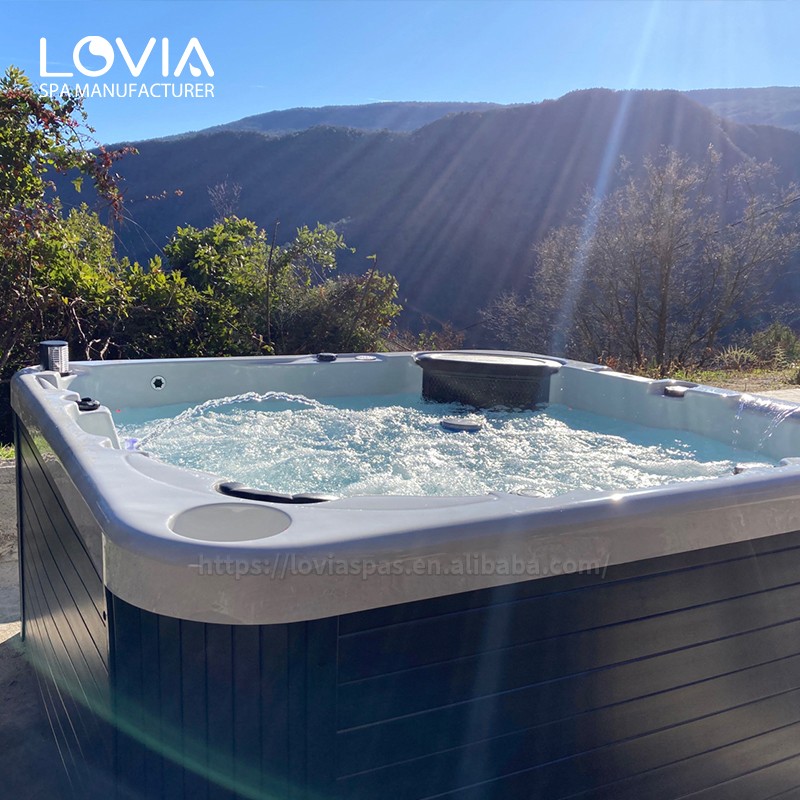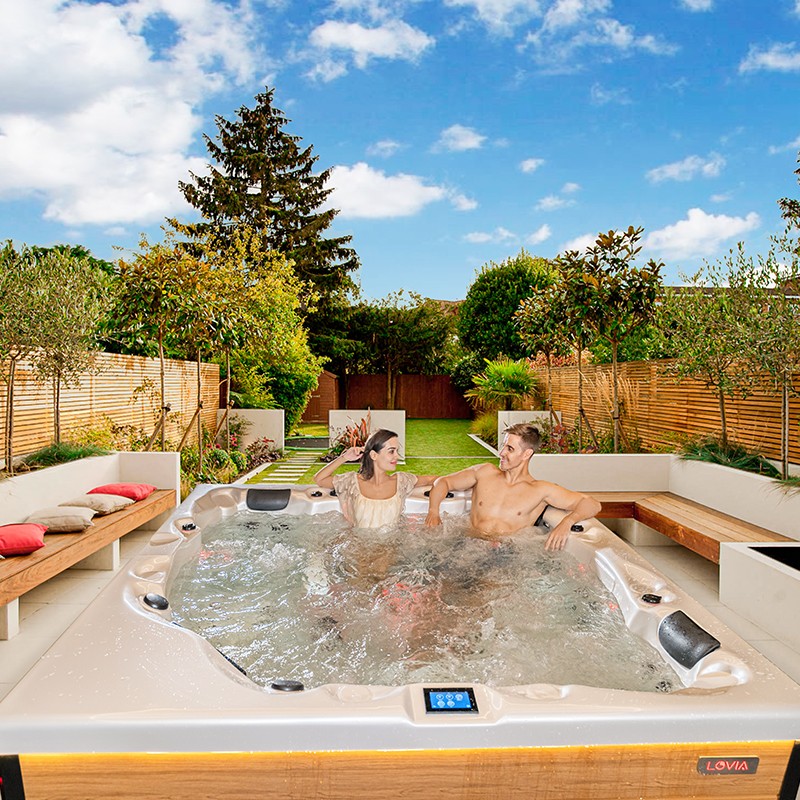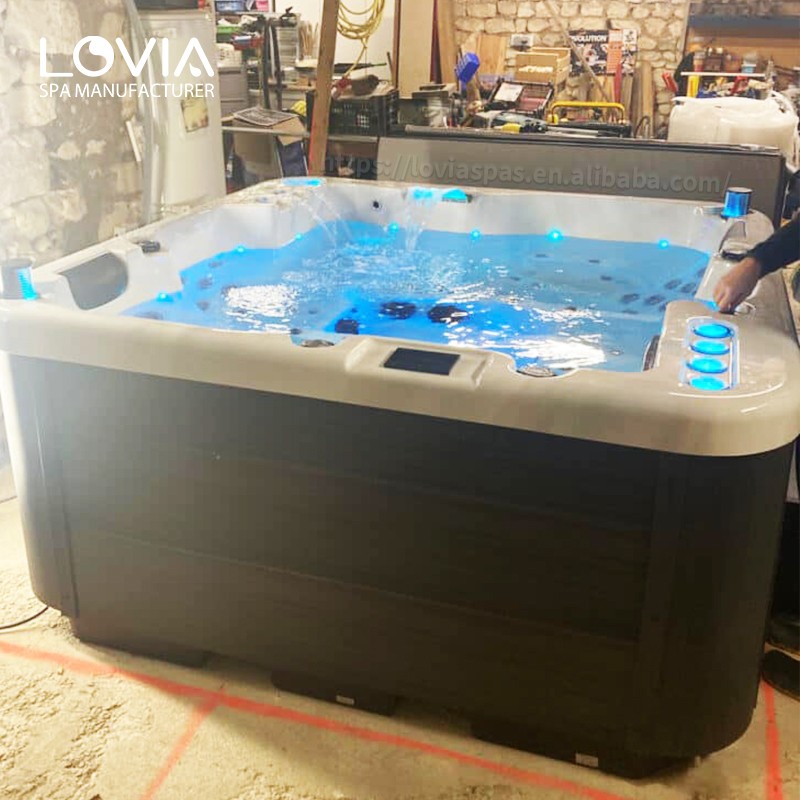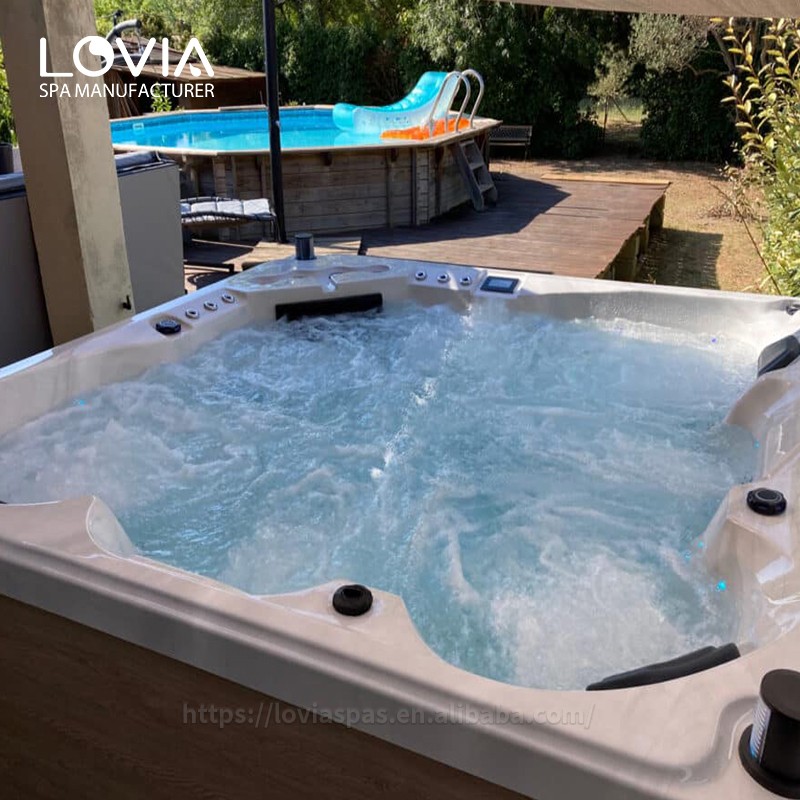
What consumes chlorine in an outdoor whirlpool spa tub?
2025-06-25 15:30When using an outdoor whirlpool spa tub, chlorine is one of the common water disinfectants. It can effectively kill bacteria, viruses and other harmful microorganisms in the water to ensure clean water quality. However, chlorine is not a substance that always remains effective. During the use of an outdoor whirlpool spa tub, the concentration of chlorine will gradually decrease due to the influence of various factors. This phenomenon is called "chlorine consumption". Chlorine consumption not only affects water quality, but also may increase the cost of water quality management and bring additional maintenance burden to users.
This article will discuss in detail the various factors that affect the chlorine consumption of outdoor whirlpool spa tubs, analyze how these factors are closely related to chlorine consumption, and propose some prevention and management measures to help users better maintain the balance of bathtub water quality and ensure health and safety during use.

What is chlorine consumption?
Chlorine consumption refers to the process by which chlorine reacts with substances in the water and loses its disinfecting ability. In an outdoor whirlpool spa tub, chlorine is usually used to control bacteria, algae and other microorganisms in the water. However, during use, chlorine reacts with a variety of substances that deplete its effectiveness, causing it to gradually lose its disinfecting ability. This not only affects water quality, but also requires whirlpool spa tub users to constantly add chlorine, increasing maintenance costs.
Chlorine consumption is divided into two categories: one is "normal consumption", which is an inevitable phenomenon that chlorine reacts with natural substances in the water; the other is "accelerated consumption", which is usually caused by external factors, resulting in excessive consumption of chlorine and the need for more frequent replenishment.
Why does chlorine in outdoor whirlpool spa tub water deplete?
The reasons for chlorine depletion in outdoor whirlpool spa tubs are:
1. Temperature
2. Frequent use of whirlpool spa tubs
3. Organic contamination
4. Number and weight of spa users
5. Environmental factors (pollutants, dust, pollen, insects)
6. Chemicals and detergents

1. Temperature
Water temperature is one of the important factors affecting chlorine consumption. Chlorine decomposes faster in hot water environments, so the high temperature water environment of outdoor whirlpool spa tubs accelerates chlorine consumption. This is because high temperatures accelerate chemical reactions, causing chlorine to decompose faster into chloramines and other byproducts. Especially in the hot summer, the water temperature in the whirlpool spa tub will rise, and the chlorine consumption rate will also increase.
In addition, sunlight exposure will also have an impact on the chlorine in the water. Ultraviolet rays will decompose chlorine, resulting in a decrease in the chlorine concentration in the water. Therefore, chlorine consumption is faster in an environment with direct sunlight.
2. Frequent use of whirlpool spa tubs
Frequent use of outdoor whirlpool spa tubs will accelerate the consumption of chlorine. Every time a user enters a whirlpool spa tub, the chlorine in the water comes into contact with human skin, sweat, cosmetics, skin care products, and hair, which react with the chlorine and consume the effectiveness of the chlorine. For example, organic matter in sweat will quickly react with chlorine to form chloramines. These byproducts not only consume chlorine, but may also cause unpleasant odors in the water.
In addition, every time an outdoor whirlpool spa tub is used, the bathtub water is agitated, bubbles are formed, and organic matter and pollutants in the water are released to the surface of the water, thereby accelerating the consumption of chlorine.
3. Organic contamination
The amount of organic matter in the water directly affects chlorine consumption. When there is a large amount of organic matter in the outdoor whirlpool spa tub water, such as bacteria, oil, cosmetics, skin flakes, dust and dirt, chlorine will react with these substances to form chloramines or other byproducts. Chloramines not only consume chlorine, but also produce odors and may cause irritation to the skin and eyes.
For example, the cosmetics, skin care products or sunscreens that users bring into the whirlpool spa tub will increase the organic burden in the water. These substances will consume chlorine and cause water quality to deteriorate, increasing the complexity and cost of maintenance.
4. Number and weight of spa users
The number and weight of spa users also have a certain impact on chlorine consumption. More users means an increased burden of organic matter, bacteria and oil in the water, which chlorine needs to react with to maintain the water quality. And heavier users tend to excrete more sweat, sebum and other organic matter, resulting in increased chlorine consumption.
Therefore, more users and heavier users will cause the chlorine concentration to drop faster, and chlorine needs to be added more frequently to maintain the water quality of the outdoor whirlpool spa tub.
5. Environmental factors
Pollutants, dust, pollen, insects, and microorganisms in the air in the outdoor environment will enter the whirlpool spa tub and react with the chlorine in the water. These external substances will accelerate the consumption of chlorine, especially in the natural environment, where bacteria and impurities in the air will enter the whirlpool spa tub with the air flow, increasing the consumption of chlorine.
In addition, the warm and humid environment also provides good conditions for the reproduction of microorganisms, which makes the chlorine consume faster when it comes into contact with these microorganisms.
6. Chemicals and cleaning agents
The use of chemicals such as whirlpool spa tub cleaners, disinfectants, and algaecides will also affect the consumption of chlorine. Some chemicals may react with chlorine, causing chlorine to be consumed. For example, some detergents and algaecides contain active chemical ingredients that react with chlorine to produce byproducts, which in turn consume chlorine in the water.
Therefore, when cleaning and maintaining an outdoor whirlpool spa tub, it is necessary to choose the right products to avoid excessive consumption of chlorine. Cleaners containing high concentrations of chlorides or other reactive chemical ingredients should be avoided as much as possible.

How to reduce the consumption of chlorine in a whirlpool spa tub?
Ways to reduce chlorine consumption in whirlpool spa tubs include:
1. Control water temperature (between 100°F and 102°F)
2. Clean spa tubs regularly
3. Control the number of users and frequency of use
4. Use appropriate disinfectants
5. Avoid direct discharge of pollutants
1. Control water temperature (between 100°F and 102°F)
In order to reduce chlorine consumption, it is recommended to keep the water temperature of the hot tub within a suitable range. Generally speaking, it is recommended to control the water temperature between 100°F and 102°F, rather than too high a temperature. High temperatures not only accelerate chlorine consumption, but may also cause excessive stress on the bathtub equipment, so maintaining a moderate temperature can reduce chlorine consumption and increase the life of the equipment.
2. Clean spa tubs regularly
Regularly cleaning outdoor whirlpool spa tubs can remove accumulated grease, dirt and other organic matter, thereby reducing their consumption of chlorine. When cleaning, non-corrosive detergents should be used to avoid chemical reactions that cause chlorine consumption. In addition, the filter can be rinsed regularly to ensure filtration and improve water quality.
3. Control the number of users and frequency of use
Reducing the frequency of use of outdoor whirlpool spa tubs, especially avoiding multiple people using them at the same time, can effectively slow down the consumption of chlorine. If multiple people must use the spa tub, try to ensure that the users are clean and do not bring a large amount of chemicals or organic matter into the tub.
4. Use appropriate disinfectants
In addition to chlorine, other disinfection methods can also be considered, such as salt water systems or ozone disinfection systems. Salt water systems produce chlorine through electrolysis, so they can provide a more stable release of chlorine and reduce the frequent addition of chlorine. Ozone disinfection systems can disinfect water quality through the strong oxidizing effect of ozone, reducing the use of spa tub chemicals and chlorine consumption.
5. Avoid direct discharge of pollutants
Before using an outdoor whirlpool spa tub, it is recommended that users thoroughly clean their bodies and avoid bringing in organic matter such as cosmetics, skin care products, sweat, etc. In addition, ensure that the surrounding environment is clean and avoid dust, leaves, pollen and other substances from entering the water.

Can I mix different spa models in one order?
Yes, we allow mixed model orders for wholesale and trial purchases. This is ideal for distributors testing various designs or building a diverse product catalog. Our sales team will assist you in selecting the best-selling spa types based on your market demand. You’ll still enjoy low factory prices and consolidated shipping for cost efficiency.
